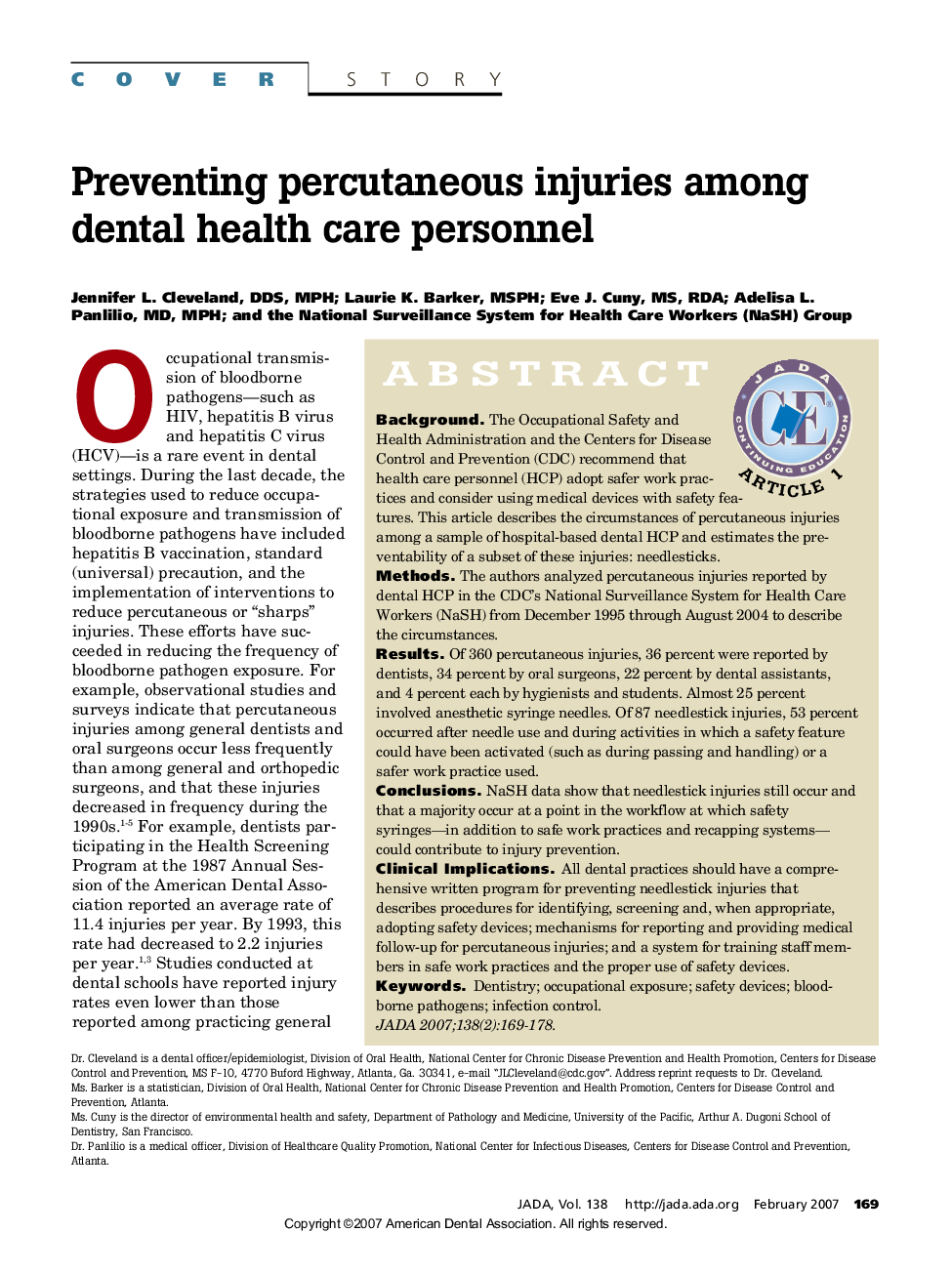| Article ID | Journal | Published Year | Pages | File Type |
|---|---|---|---|---|
| 3140534 | The Journal of the American Dental Association | 2007 | 10 Pages |
ABSTRACT BackgroundThe Occupational Safety and Health Administration and the Centers for Disease Control and Prevention (CDC) recommend that health care personnel (HCP) adopt safer work practices and consider using medical devices with safety features. This article describes the circumstances of percutaneous injuries among a sample of hospital-based dental HCP and estimates the preventability of a subset of these injuries: needlesticks.MethodsThe authors analyzed percutaneous injuries reported by dental HCP in the CDC's National Surveillance System for Health Care Workers (NaSH) from December 1995 through August 2004 to describe the circumstances.ResultsOf 360 percutaneous injuries, 36 percent were reported by dentists, 34 percent by oral surgeons, 22 percent by dental assistants, and 4 percent each by hygienists and students. Almost 25 percent involved anesthetic syringe needles. Of 87 needlestick injuries, 53 percent occurred after needle use and during activities in which a safety feature could have been activated (such as during passing and handling) or a safer work practice used.ConclusionsNaSH data show that needlestick injuries still occur and that a majority occur at a point in the workflow at which safety syringes—in addition to safe work practices and recapping systems—could contribute to injury prevention.Clinical ImplicationsAll dental practices should have a comprehensive written program for preventing needlestick injuries that describes procedures for identifying, screening and, when appropriate, adopting safety devices; mechanisms for reporting and providing medical follow-up for percutaneous injuries; and a system for training staff members in safe work practices and the proper use of safety devices.
